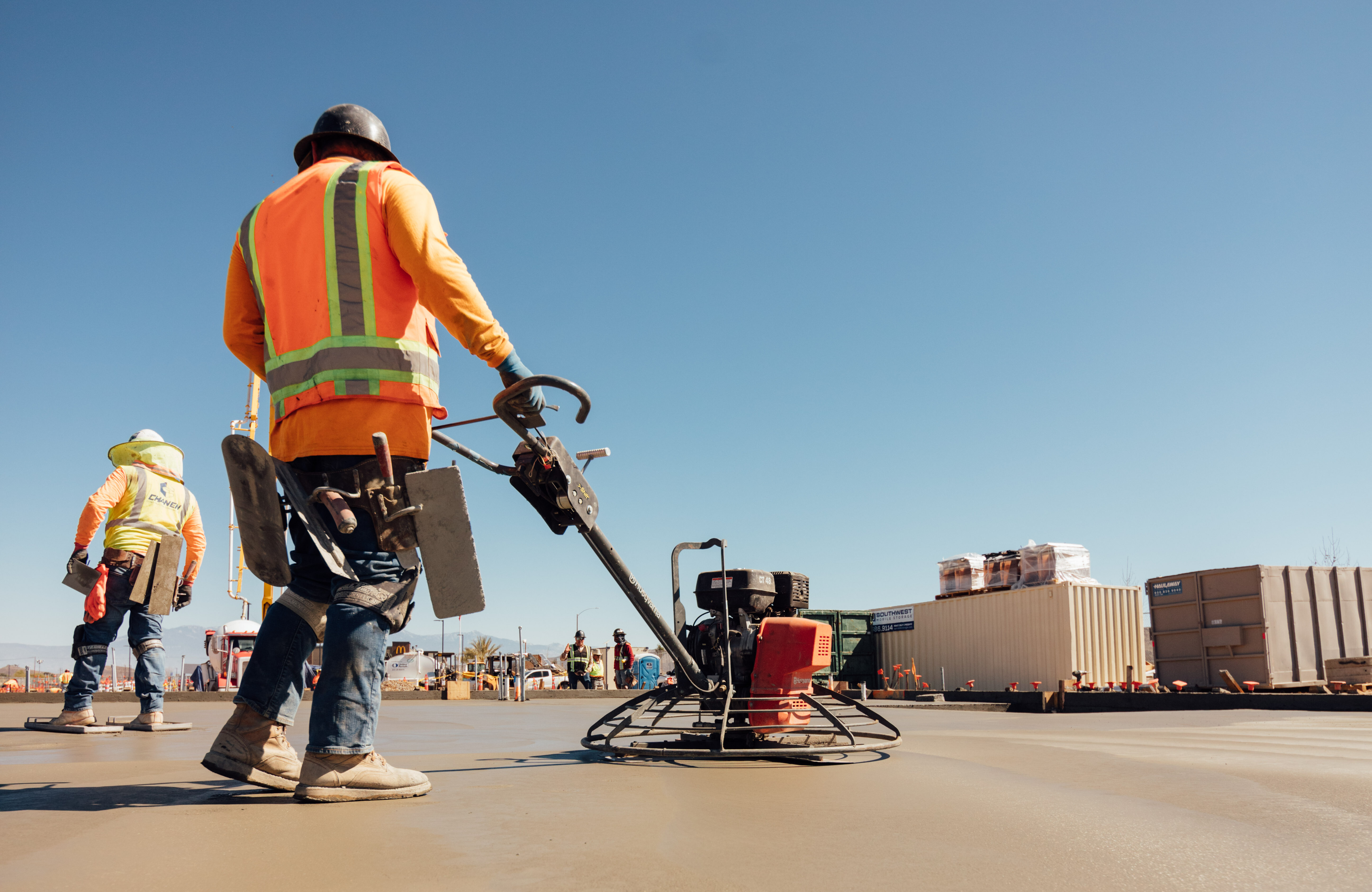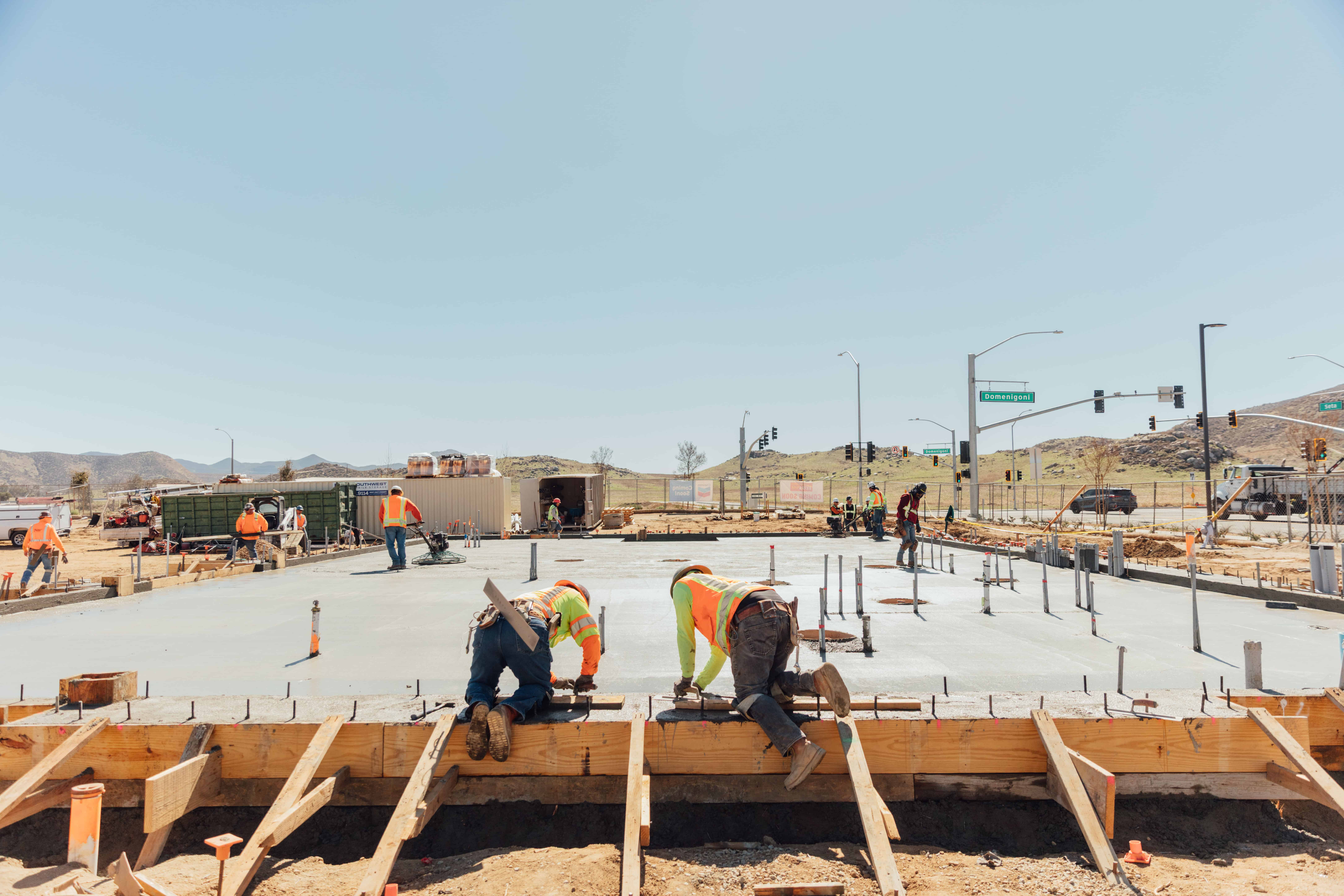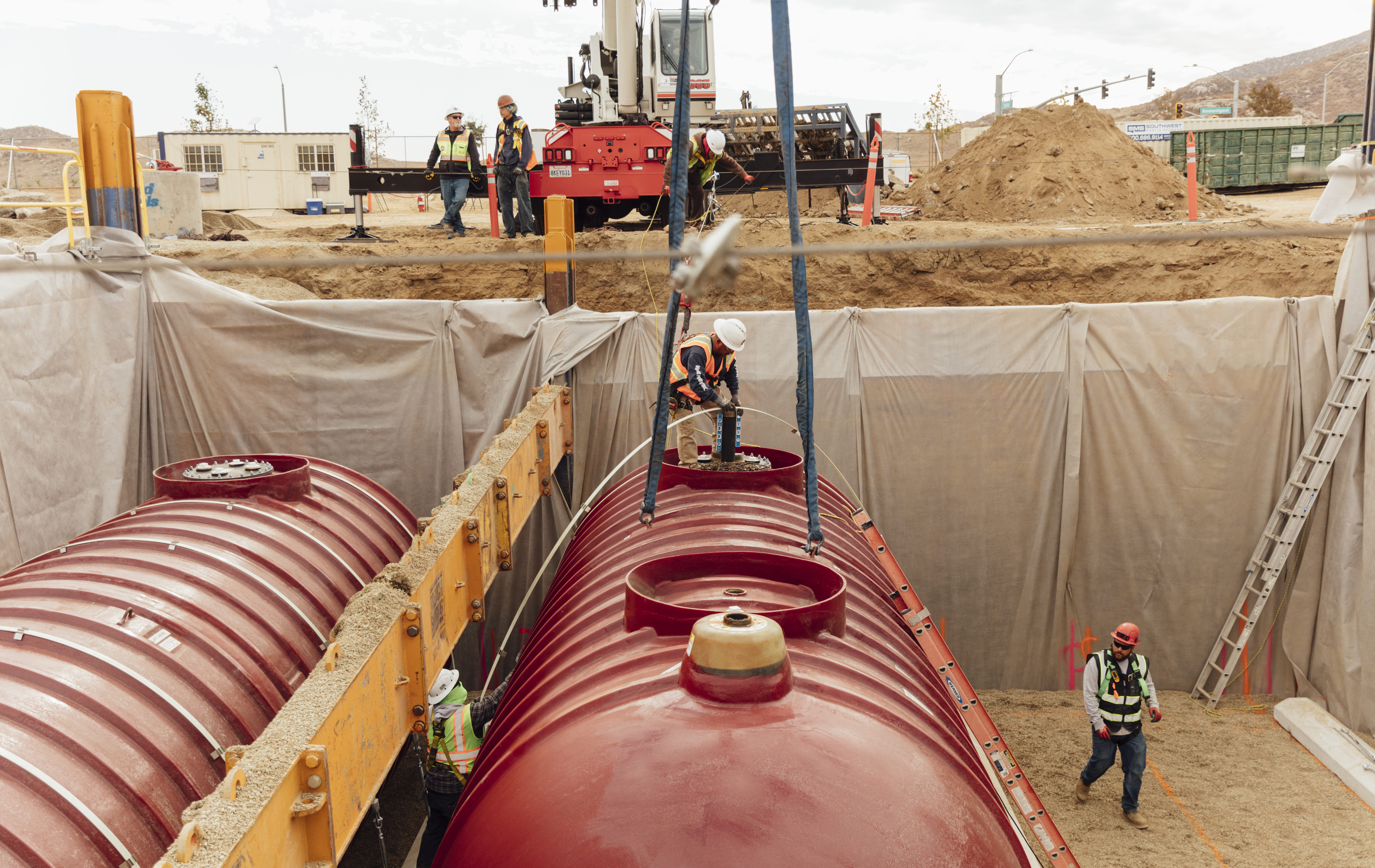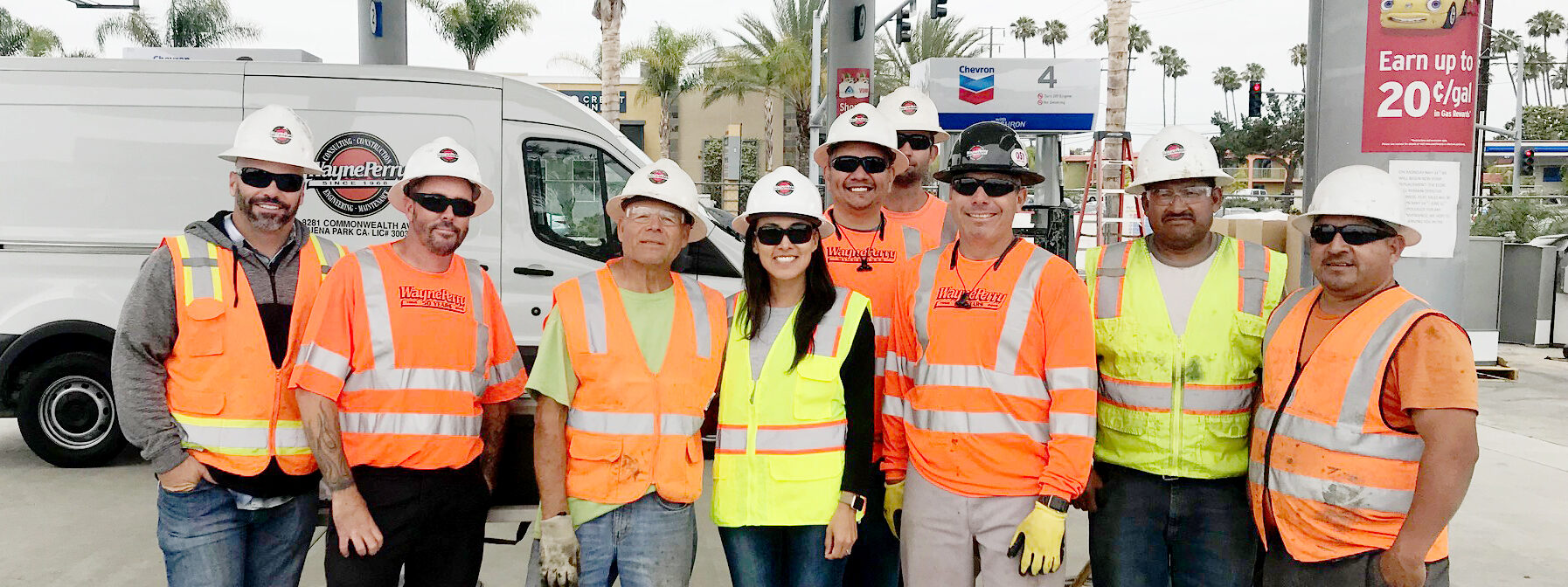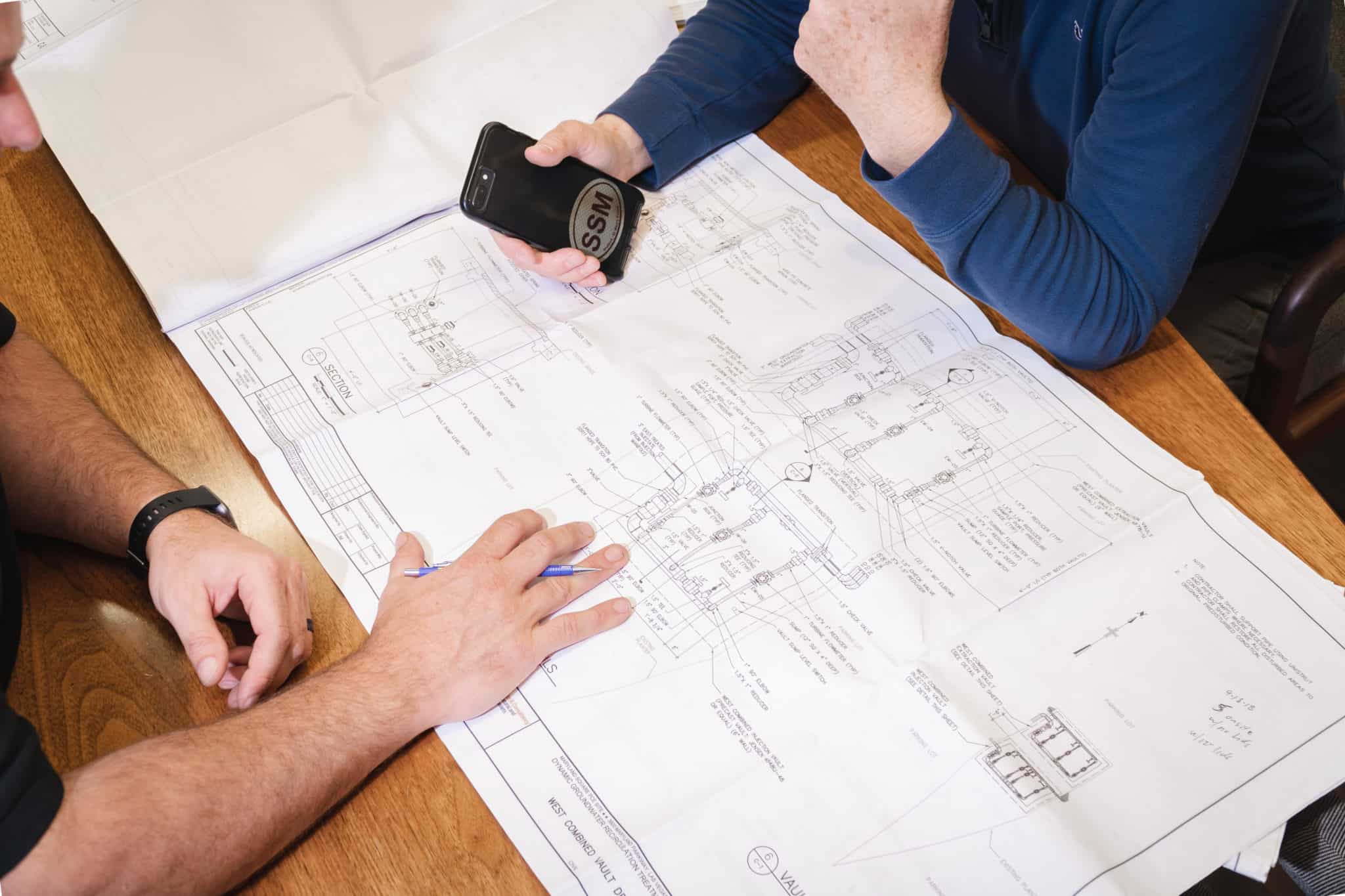Methyl tertiary-butyl ether (MTBE) once served as an indispensable additive in gasoline improving performance, yet the legacy of MTBE and the breakdown product TBA, now haunt communities across the United States.
Notorious for their solubility, these toxic compounds infiltrate groundwater, triggering significant concerns among local officials, environmental agencies, and residents alike. The threat these contaminants pose to public health and environmental integrity demands swift and decisive action to restore soil and groundwater.
Dinuba, California—A City under Threat
Nestled in the picturesque agricultural area of Tulare County, the city of Dinuba, California, faced an environmental threat when authorities learned of contaminants in the groundwater stemming from a local gas station that years prior was known to have leaking underground storage tanks (USTs).
Despite the tanks having been removed and replaced in 1998, the damage had already been done. A cocktail of oil, gasoline, MTBE, and other hazardous chemicals was lurking underground for years. By the time city officials discovered the contamination, it had extended 2,500 feet downgradient from the gas station. Even worse, the contamination was edging closer to the city’s municipal water supply every day.
A Complex Cocktail of Chemicals and Participants
Breathing gasoline with MTBE can cause headaches, dizziness, nausea, and other symptoms, and even low levels of this chemical can render drinking water undrinkable. This hazard to human health prompted California to ban the sale of gasoline containing MTBE in 2003. Four oil refiners identified as having sold gasoline containing MTBE were ordered to address the contamination.
A City against a Time Clock
The clock ticked each day while the growing plume of contamination headed toward the city’s residential area and water supply. Wayne Perry Inc. (WPI) was selected for its environmental expertise, resources, and ability to tackle the crisis in short order.
When the project officially kicked off in 2007, it required collaboration on a grand scale. WPI’s environmental experts quickly worked to collaborate with the four oil refiners and oversight agency staff to identify how best to address the crisis as quickly and cost-effectively as possible.
A Complex Project with a Multilevel Execution Plan
WPI’s environmental scientists worked out a two-tiered plan to initiate swift containment measures at the source while simultaneously assessing and evaluating the extent of the contamination and its migratory path. To prevent the contamination from spreading, the team installed an extraction system at the source of the contamination and a biosparge O₂ injection barrier 2,500 feet downgradient to extract the contamination and jump-start bioremediation measures.
At the same time, environmental scientists ran soil and groundwater samples, monitored air quality levels, and pilot-tested its remediation plan. Once successive areas of the suspected contamination were identified, the crew began excavating and removing the contaminants using a variety of synergistic techniques—including soil vapor extraction, pumping and treating, and chemical oxidation—in a coordinated effort to accelerate decontamination.
A Marathon, Not a Sprint: The Race to Remediate a Fast-Moving Plume
WPI’s engagement on the project traversed a massive 16-year undertaking. The remediation involved an ongoing process of four different remediation treatment technologies while navigating intricate regulatory requirements—plus a continuous cycle of improvement, testing, and evaluation. WPI’s remediation processes required a perpetual systematic approach to properly operate and maintain efficiently over a vast geography and a prolonged timeline.
Throughout the decontamination, WPI managed the following activities:
- Ongoing Assessment and Containment: The project commenced with a meticulous assessment to reveal the actual extent of the contamination’s reach. Swift containment measures were put into place with extraction systems installed at the source, and a biosparge O₂ injection barrier was installed 2,500 feet downgradient to support faster bioremediation of the contaminants.
- Continuous Feasibility and Design: As the years unfolded, extraction systems and biobarriers, along with air sparging systems, were used to continue remediation while testing, risk assessments, and sequential feasibility studies continued.
- Collaboration with Various Stakeholders: WPI’s efforts transcended geographic boundaries, encompassing adjacent properties and engaging various stakeholders throughout the process. Groundwater extraction studies and regulatory compliance formed the basis of ensuring adherence to stringent standards while safeguarding community interests.
- Oversight of Regulatory Compliance: In 2018, the city, the refiners, and WPI received regulatory approval for some aspects of the project, setting the stage for the sequential closure of the extraction wells and biobarriers. In September 2022, the project was completed, and all parties were notified of the final site closure in July 2023.
Results
Working over an expansive timeline, WPI remediated an expansive contamination plume that threatened the city’s drinking water supply through its strategic assessment and project implementation. Remaining vigilant and engaged over a 16-year timeframe, WPI fast-tracked the project toward completion through its proactive approach, technical expertise, and collaborative efforts, successfully remedying the threat to the city’s water supply and residents.
Project Highlights at a Glance
- Extensive Contamination Response: The contamination, stemming from leaking underground storage tanks, extended 2,500 feet downgradient from the gas station, endangering the city’s water supply.
- Collaborative Remediation Effort: WPI collaborated with city officials, liable oil refiners, and environmental agencies, leveraging resources to swiftly address the crisis.
- Multilevel Execution Plan: WPI implemented a two-tiered plan involving containment measures at the contamination source and downstream biosparge O₂ injection barriers to accelerate bioremediation.
- Long-Term Project Management: Over 16 years, WPI conducted ongoing assessment, containment, and treatment efforts while navigating regulatory requirements and stakeholder collaboration.
- Interim Remedial Action Success: By taking interim action, contamination in the closest areas to the gas station was eliminated, protecting the city’s water supply and reducing closure time by five to seven years.
- Extensive Collaboration: Extensive contamination that surpassed the station owner’s ability to address the damage with support from California’s Underground Storage Tank Cleanup Fund (USTCF) required the formation of a joint remediation committee, which WPI interfaced closely with along with city officials.
- Comprehensive Cleanup Equipment: Soil vapor extraction, air sparging, O₂ injection biobarrier, and pump-and-treat systems were deployed across four areas of the contaminated site to ensure a thorough remediation process.
- Regulatory Compliance and Closure: Regulatory approval in 2018 paved the way for the project’s completion in 2022, marking the closure of the site and safeguarding Dinuba’s future.
- Project Cost: Nearly $5 million ($300,000 per year in operating costs).
